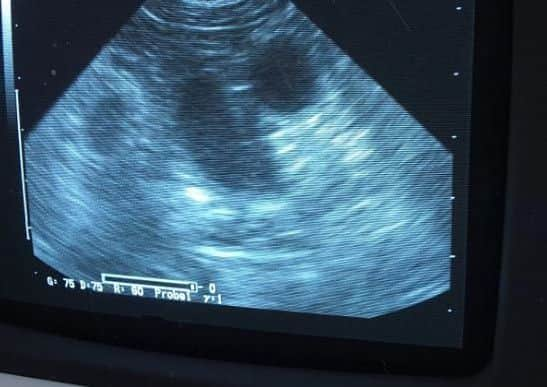Diagnostic challenge of a lugubrious cat for Julian


The first half of the answer came quickly, “He’s just not…” I waited for the rest of the story, but nothing was forthcoming.
“He’s just not what?” I asked, searching for more information about the cat, who was sitting quietly on the table, not giving any clues about the reason for his visit.
Advertisement
Hide AdAdvertisement
Hide Ad“…moving very quickly,” was the rest of the information, when it eventually arrived.


“He’s lost his…fluidity, you see”. I understood what was meant by this very non-specific description of Beryl’s illness, but it was not very helpful. A lugubrious cat is a diagnostic challenge. His appetite was okay, his toilet habits unknown (“he goes outside, in the bushes, you see”).
Luckily for me, my stethoscope identified a sore throat and my thermometer identified a temperature of 104 degrees. Beryl was certainly poorly, and I made a tentative diagnosis of laryngitis. I gave him some treatment and asked to see him again the following day, to check his progress. Although my diagnosis was by no means certain, I felt confident my injections would be helpful.
My very next patient, a five-year-old whippet called Dora, was on her holidays. She had become ill on the way to Yorkshire from Lincolnshire and was showing exactly the same signs as Beryl – standing still and not moving at all, let alone not very quickly. Her temperature was exactly the same as Beryl’s too, 104 degrees.
Advertisement
Hide AdAdvertisement
Hide Ad

It turned out that Dora had been in season just three weeks previously. I was immediately suspicious that she was suffering from a condition called ‘pyometra’. This is a serious infection of the uterus, whereby the uterine horns, each usually about the diameter and size of a pencil, fill up with pus, becoming distended so that they resemble two Cumberland sausages. There is a high risk both of rupture of the uterus, and of life threatening toxaemia from the infection.
I reached for the ultrasound scanner to confirm the diagnosis; sure enough loops of distended, fluid-filled uterus where visible on the screen. Dora had a pyometra and needed surgery immediately.
I sent her owner off to explore the pleasant market towns of North Yorkshire, promising to phone with an update as soon as I could. Within quarter of an hour, Dora was anaesthetised, clipped and prepped and in theatre. The procedure was exactly the same as a ‘spay’ operation – that is to say, an ovariohysterectomy. I ligated both Dora’s ovaries and carefully removed her distended uterus. Its blood vessels were engorged and its walls stretched perilously thin, risking catastrophic rupture at any point. She had arrived in North Yorkshire just in time.
Avoidance of this serious, but common condition is one of the reasons we advise owners to spay non-breeding bitches when they are young. Whilst removing a pyometra is in principle just a spay, operating on a sick and compromised patient is more challenging.
Advertisement
Hide AdAdvertisement
Hide AdHowever, for Dora, everything went smoothly during her time in theatre and, before long, I was on the phone to her owner, reassuring her that her little whippet would be fine.
“I’m just having a cup of coffee,” she said, relief in her voice, “I’ll come and get her in half an hour, if that’s OK?”
Not bad service, I thought.
Follow Julian on Instagram @juliannortonvet.